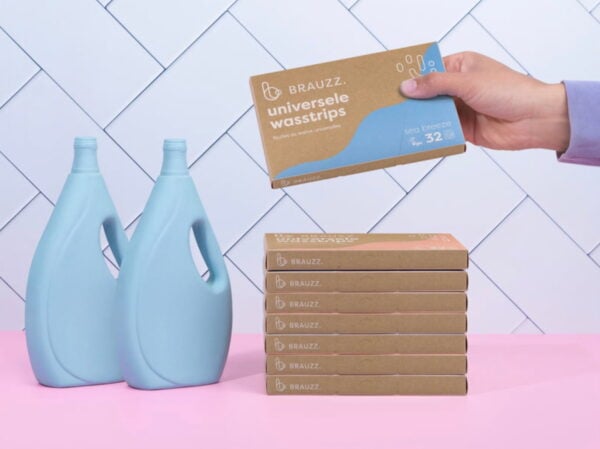Standard operating procedures — also called standing operating procedures (or simply SOPs) — are sets of step-by-step instructions to complete specific tasks or operations.
In other words: they’re “how-tos.”
They list the exact steps your resources can take to complete a task like onboarding an employee or releasing a product update or resolving a support ticket.
Benefits of SOPs
Above everything else, SOPs standardize (quality) work.
They enforce a consistent way of working. If you have a standard operating procedure for handling support tickets, all your support resources will perform exactly the same way, offering coherent support experiences.
SOPs also reinforce the best way of working as they present only the no-fail and optimized practices to get the work done.
They support easy knowledge-sharing as well by giving their users everything they need to complete their tasks from start to finish.
They double up as training material, too, helping new employees up to speed.
SOPs can come in many formats as operations vary greatly for different businesses… but, in general, they have a three-part structure.
The three-part structure of a standard operating procedure
Most standard operating procedures will come with at least these three parts:
- The first part describing the standard operating procedure.
- The second part being the actual “body” of the SOP — or the instructions.
- And the third part offering all the reference material (like attachments, notes, etc.) that might be useful to the SOP user.
So let’s see how you can write a good, concise standard operating procedure that your resources actually use.
Writing the first part of your standard operating procedures
The first part of a standard operating procedure is its title page and lists several of its details. Here are the steps you need to follow to get this section right.
Write a clear header for your standard operating procedure.
Your SOP’s header can have as much or as little information as you need.
Most SOPs will use a header that has, at the very least:
- A descriptive title of the SOP
- The name of the owner and reviewer
- The name of the person/role who it’s meant for (the “user”)
It should also have additional details like:
- When the SOP should be used
- The access level/tools needed to carry out the SOP
- Any warning or caution messages
Some businesses also stick a revision history right inside the header or title page of a standard operating procedure. But this can be listed in the last section too.
This standard operating procedure’s template (from Ironstone) uses a great header:

Write the purpose of your standard operating procedure.
The purpose of your standard operating procedure tells the user what the SOP is about.
For example, the purpose of a standard operating procedure about handling a support ticket can simply be:
This procedure details how to handle an incoming ticket and track it to a resolution (or escalate, if needed).
Write your standard operating procedure’s scope.
Your SOP’s scope outlines where it starts and ends.
For instance, the scope of a support ticket handling standard operating procedure could be:
This procedure applies to all the incoming tickets that are flagged under the category “Refund.”
A process like customer support or service can have dozens of SOPs to cover its different tasks. So it should be clear where a SOP’s scope ends and the scope of another begins.
Note the roles who need to follow — or are involved with — the SOP.
List all the people (roles) who are responsible for following and maintaining the SOP.
For a helpdesk ticket handling SOP, the roles involved could be anyone from the agent receiving the ticket to the customer success or experience manager who might get involved in the case of escalations.
Put together all the quick reference material that supports your standard operating procedure.
List any definitions, abbreviations, or acronyms that you use across your business — standard or non-standard — on your SOP.
For example, if you use the term “code red” to mark an “angry” ticket that will result in, say, a PayPal dispute, explain the term in your SOP’s glossary.
Write the “body” of your standard operating procedures
These are your instructions to complete the procedure’s intended task.
It’s best to get this section written by a person who does the work. For instance, if you’re documenting how basic help desk resolution happens at your business, get a tier 1 customer service executive to write it. Because this person responds to several such issues a day, they’ll naturally write a good SOP.
Note that this is “work.” And it’s time-consuming too. So it will impact your support’s bandwidth.
Also, writing SOPs needs technical writing skills, so not all of your employees will get it right. They’d know what the process is, but they might not get how to document it. To go about this, get a freelance technical writer onboard.
One tip to keep in mind here is to write the SOP while actually doing the procedure, so that even your first draft will be decent.
In addition to the steps to do that result in a task’s completion, note and address any known exceptions.
For example:
Step X: Forward the ticket to a tier 2 agent.
Note: If you get an out-of-office message, forward the ticket to the support manager.
The point is to address the unexpected outcomes too.
Write the final part of your standard operating procedures
The last section of your SOPs is reserved for reference material.
It links to material that the person handling the SOP can use for additional help or for simply executing the SOP.
These could be links to internal knowledge base articles, checklists, forms, contact information, etc.
Contingencies and corrective action content also go here.
Testing for completeness and accuracy
The best way to ensure that your SOPs are complete and accurate and can be trusted to get the desired outcome (task completions) is to test them.
So once you write a standard operating procedure, hand it to someone (other than the writer) to implement it. They must complete the task using only the provided document (the SOP!).
You can also hire a specialist for a one-off job where the only support they get from you is your SOP.
Get the tester to note all the points where they feel lost or get stuck when implementing the SOP. These could be signs of unclear instruction or missing information.
You’ll have to fix all these.
Rolling out your standard operating procedures
Once your SOPs are ready, it’s time to roll them out because even the best SOPs are useless unless followed.
It’s generally challenging to get your experienced employees to follow SOPs as they know the stuff they do. To sell SOPs to them, highlight how following them will free them from remembering all the small stuff.
At a deeper level, though, you’ll have to devise ways to make adherence to SOPs a part of your company culture.
Optimizing for performance
SOPs are rarely a “once-and-done” process, because things change.
A new legislation might add a few steps to your SOP. Changing a tech solution from your stack might need a set of updates to the procedure. Running into unexpected results can force you to go back to your SOP and add additional steps or fix the missteps as needed.
You get the idea.
In short: Your SOPs are “living, breathing” docs that need updating. So run maintenance checks on your SOPs from time to time and keep updating.
One tip to write the most thorough SOPs
The whole idea of a SOP is to be the most COMPLETE document on how to complete an operation. But capturing everything that’s needed to complete an operation is easier said than done.
Giles Johnston, author of Effective SOPs and a consultant who works with businesses helping them design optimized SOPs, gives a word of caution against writing rushed-up standard operating procedures:
“I joke with my clients that you have step one, then some magic happens, and you have step two. In reality, there may be 15 steps across a process that you need to capture.“
Wrapping it up…
Documenting the standard operating procedures that power your core business processes ensures that your team always has guaranteed-to-work ways of going about their daily operations.
They know exactly what to do and what comes next. In addition to higher productivity and consistent performance, SOPs also help avoid all the avoidable errors.
So start now — just create a Google Doc and write your first SOP. You can also use this template to get a head start.
How can HeroThemes help you with creating and rolling out SOPs?
Essentially, SOPs are tools for internal company-wide knowledge sharing. With KnowAll , our knowledge base solution that powers internal knowledge bases for hundreds of businesses, you can easily create a “registry” of your SOPs and share with your team.
The post How to Write Thorough Step-By-Step Standard Operating Procedures (SOPs) appeared first on HeroThemes.

